Table of Contents
1. Introduction
2. Key types of airbrushes and their uses
3. Market insights and trends in airbrush technology
4. Key factors to consider when selecting airbrush products
5. Best airbrush models for 2025: Features and performance
6. Conclusion
Introduction
Airbrush technology has become an essential tool in beauty, cosmetics, and other industries, offering precision, flawless coverage, and efficiency. From creating seamless makeup looks to detailed body art, airbrush systems have significantly advanced, providing better control and longer-lasting results. By 2025, innovations in design and functionality will make airbrush products even more versatile and effective. With improved portability, skin-friendly formulations, and user-friendly designs, these tools are set to meet the growing demand for professional-grade finishes across various applications, enhancing both performance and ease of use.
Key types of airbrushes and their uses
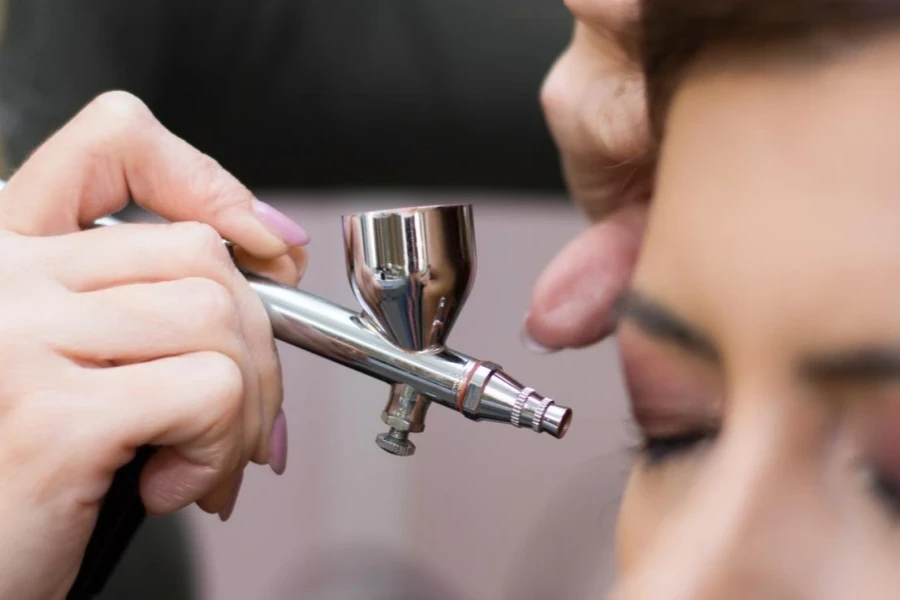
Single-action vs. dual-action airbrushes
Single-action airbrushes are favored for their simplicity, as they release both air and paint simultaneously when the trigger is pressed. This makes them ideal for tasks requiring consistent coverage, such as larger areas in cosmetic or artistic work. However, they offer less flexibility in controlling paint flow. Dual-action airbrushes, by contrast, provide more precision, allowing the operator to control air and paint separately with the same trigger. This dual functionality makes them better suited for detailed applications, offering nuanced control over the amount of paint applied, making them a top choice for professional work in beauty or fine art.
Gravity-fed vs. siphon-fed systems
A gravity-fed airbrush uses a top-mounted cup to allow paint to flow into the nozzle, making it highly efficient at lower pressures and ideal for fine detail work, especially in cosmetics and intricate designs. The reduced air pressure required also minimizes waste. On the other hand, siphon-fed systems draw paint from a container below the airbrush, making them suitable for larger projects that require significant amounts of paint. Although they are less efficient for detailed work, their ability to handle larger volumes makes them perfect for applications like body art or larger industrial tasks.
Traditional airbrush vs. pod-based airbrush systems
Traditional airbrushes use a needle-based system, providing excellent versatility and control over paint application. They allow for adjustments in needle size and nozzle configuration, enabling professionals to handle tasks that range from delicate detailing to full coverage. However, this system requires frequent cleaning and maintenance, particularly when switching between colors. In contrast, pod-based airbrush systems integrate paint and nozzle into a single unit, streamlining the process and reducing cleaning time. Although less precise than traditional systems, pod-based airbrushes are valued for their speed and convenience, particularly in fast-paced environments like makeup studios or live events.
Market insights and trends in airbrush technology
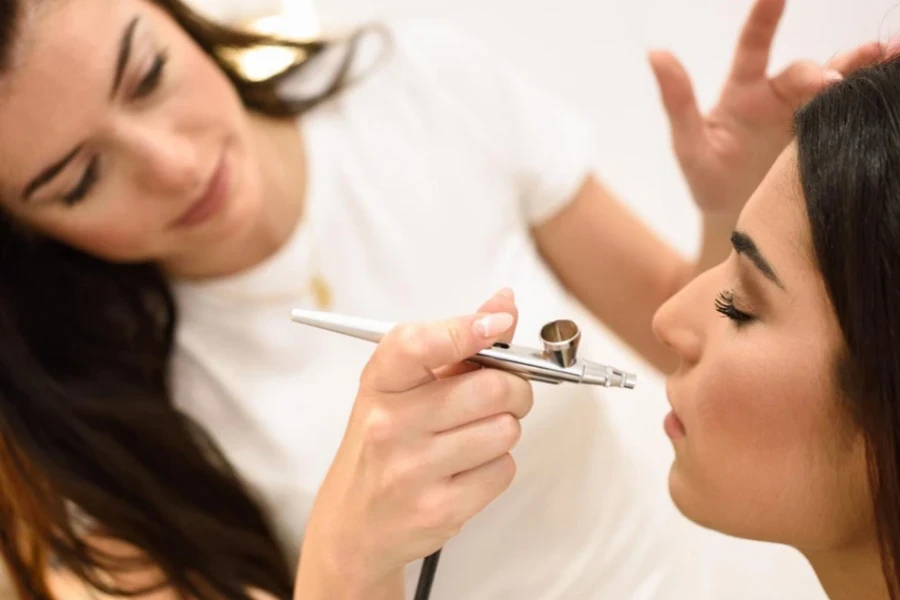
The demand for airbrush technology has seen rapid growth across various sectors due to its precision and versatility. In professional industries like makeup artistry, body painting, and special effects, airbrushes are now essential for achieving smooth, even coverage, especially in high-pressure environments such as film sets and fashion shows. The technology is also expanding into other fields, including automotive painting, tanning, and food decoration, as its accuracy and efficiency make it a valuable tool in these areas. This surge in demand has driven manufacturers to develop high-performance systems tailored to meet the rigorous standards of professional settings.
For personal use, the rise in DIY beauty trends and the accessibility of online tutorials have spurred interest in airbrush technology. Consumers are increasingly investing in these systems to achieve professional-quality results at home, drawn by the flawless, camera-ready finishes they provide. The growing availability of beginner-friendly models at affordable prices has made airbrush technology more accessible, leading manufacturers to design portable and user-friendly systems that maintain professional-grade quality. This shift has effectively bridged the gap between personal and professional use, further boosting the market.
Consumer expectations for flawless, long-lasting results have also evolved, pushing for advancements in airbrush makeup formulations. People now demand products that provide durable coverage capable of withstanding environmental factors like heat, humidity, and sweat, particularly in the beauty and performance arts industries. To meet these needs, manufacturers have developed long-wearing formulas that reduce the need for touch-ups. Social media and high-definition photography have also raised the bar for photo-ready makeup, driving innovation in lightweight, full-coverage products that deliver a smooth, natural finish while prioritizing skin health with clean beauty ingredients and nourishing components like hydrating agents and anti-aging elements.
Key factors to consider when selecting airbrush products
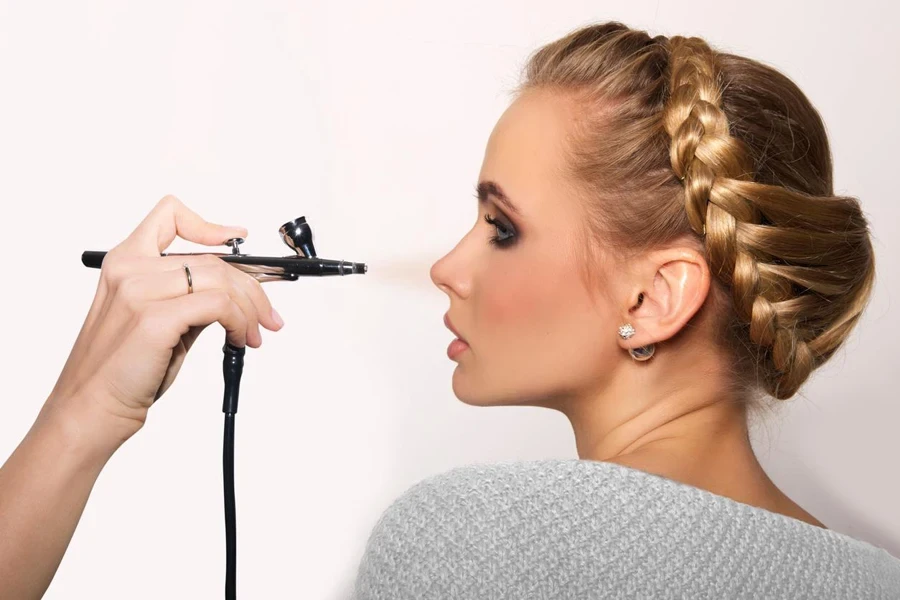
Durability and ease of maintenance
Durability is essential when selecting airbrush products, especially for frequent use in professional settings. High-quality materials, such as metal components, ensure that the airbrush system can withstand regular wear and tear. Additionally, easy maintenance is a priority, as airbrushes need frequent cleaning to prevent clogging and maintain performance. Products that come with cleaning kits or feature detachable parts make upkeep simpler and more efficient, reducing downtime. Reliable models like Belloccio and Dinair are known for their robust designs and ease of maintenance, making them ideal for long-term use.
Precision and flexibility
The precision of an airbrush system largely depends on its needle size and airflow control. Smaller needles offer more detailed work, ideal for makeup or fine artistry, while larger needles are better suited for broader coverage in tasks like body art. Adjustable airflow and compressor power further enhance flexibility, allowing users to tailor the air pressure to suit different applications. Systems with multiple airflow settings provide versatility, ensuring a consistent, smooth finish across various mediums, making them valuable tools for both intricate and large-scale projects.
Product compatibility and skin-friendly formulations
Compatibility between airbrush systems and the formulations used is crucial for smooth application and avoiding technical issues like clogging. Silicone-based makeup is popular for its long-lasting and flawless finish, making it important to choose airbrush systems that are compatible with these formulations. Additionally, the demand for skin-friendly, hypoallergenic products is growing, especially in the beauty industry. Airbrush systems that work well with natural or skin-safe formulations offer a competitive edge, catering to professionals who prioritize both performance and the well-being of their clients’ skin.
Best airbrush models for 2025: Features and performance
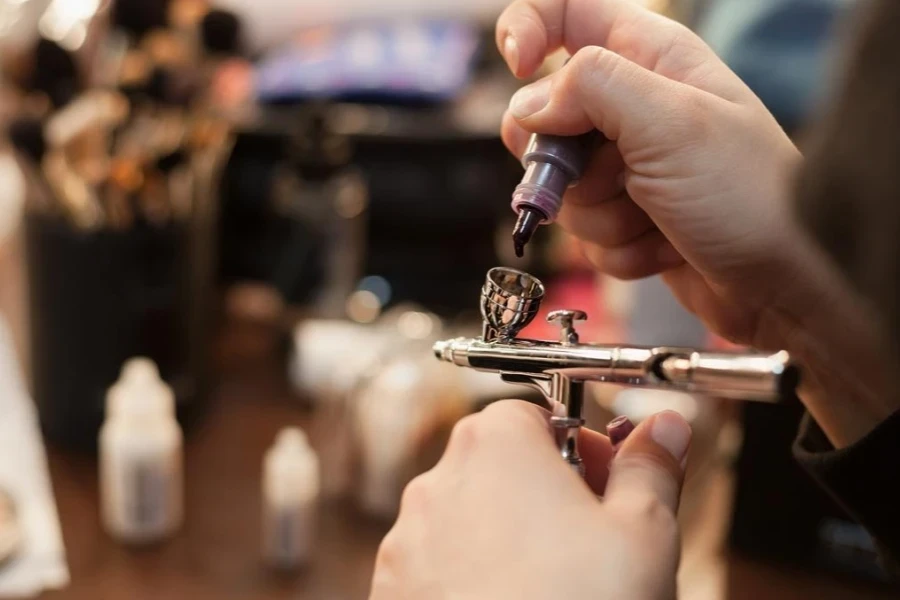
As airbrush technology advances, the top models for 2025 emphasize precision and efficiency. Cordless designs are becoming a standout feature, offering professionals greater flexibility and ease of use. Models with adjustable airflow settings provide enhanced control, making them suitable for a wide range of tasks, from detailed cosmetic work to larger-scale body art applications. Additionally, more powerful compressors are being integrated to ensure a consistent spray pattern without interruptions, crucial for achieving flawless results.
Another key trend is the rise of user-friendly, all-in-one kits. These comprehensive sets often include various needle sizes, adjustable airflow options, and multiple accessories, simplifying the transition between different tasks. Their versatility appeals to professionals across diverse fields such as beauty, special effects, and industrial design. The addition of noise-reducing technology and compact designs ensures these systems are ideal for both studio and mobile use, catering to the practical needs of professionals on the go.
In 2025, compatibility between airbrush systems and makeup formulations is a critical performance factor. Leading models are designed to work seamlessly with advanced formulations, including silicone-based and water-resistant products, ensuring even coverage and easy maintenance. These models are also evolving to accommodate hypoallergenic and eco-friendly products, reflecting broader market demands for healthier, sustainable options. This alignment with cleaner, more responsible practices enhances both the performance and appeal of modern airbrush systems.
Conclusion
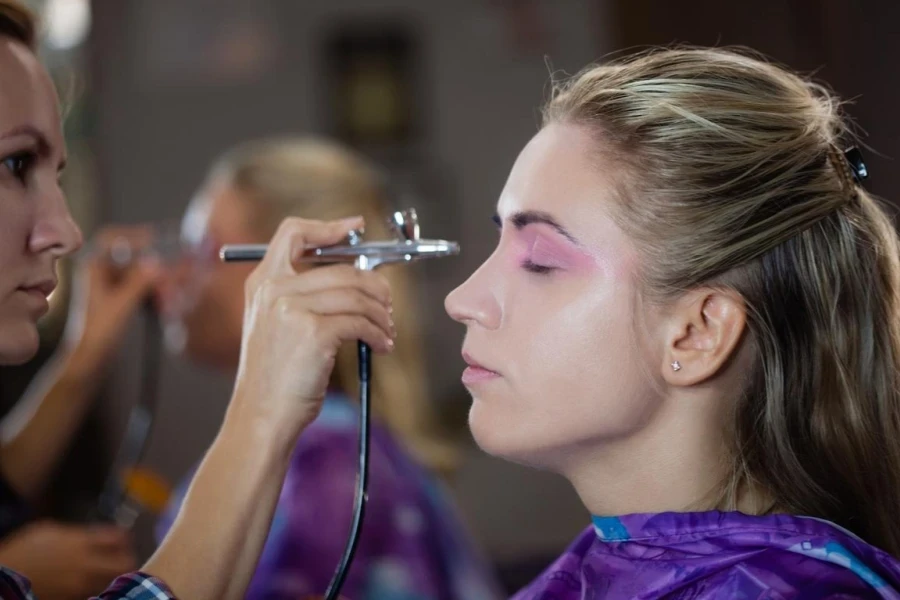
Choosing the right airbrush product in 2025 hinges on aligning the tool’s capabilities with the specific demands of the task at hand. With advancements in versatility, precision, and innovative design, professionals have access to tools that not only meet but exceed their expectations. Whether opting for top-tier models known for their adaptability or specialized systems tailored for niche applications, the focus remains on achieving consistent, high-quality results. As airbrush technology continues to evolve, staying informed about the latest innovations will be crucial for maintaining a competitive edge in any professional field.




